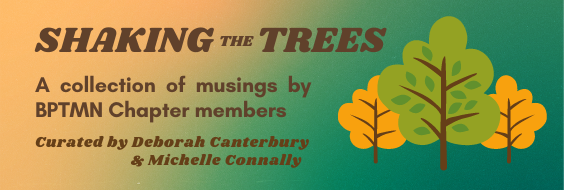Gathering Moss: by Robin Wall Kimmerer
A Book Review by the TMN Blackland Prairie Chapter Librarian Linder O’Rourke
August 5, 2024
This lovely narrative begins with Robin Kimmerer’s memories as a student in the Adirondacks as she was roaming the forest studying rocks and mosses. Her goal was to understand the diverse communities of mosses and the conditions that foster their growth. Mosses are designed for success in very tiny niches in every ecosystem on earth. There are 22,000 species of mosses in the world, and they inhabit surfaces and reproduce by spores which are elevated on tiny stalks and carried by the wind. 350 million years ago mosses emerged from the water to try to live on land; they are the most primitive land plants on earth; they are the pioneers of land and earth ecosystems. The study of mosses is called bryology.
The story she tells is full of botanical and geological detail. She is writing as a college teacher and shares with her students that mosses have not been well studied and therefore have no common names – only the lengthy scientific names given to them by scientists following the protocol of Carl Linnaeus. She takes great pains to tie the scientific to the spiritual as she records the explorations among the boulders of the Biological Station she is in charge of in the Adirondacks. The spiritual aspect of her story telling comes naturally; she’s a member of the Bear Clan of the Potawatomi Tribe of Native Americans. She easily captures the magic and mystery of the beauty of nature; her words poetically describe the essence of mosses in nature-an essence we all hope to experience as we venture into forest and meadow and river. Kimmerer reminds us that even though we are surrounded by the multitudinous beauty of nature, we are often not mindful enough of it to slow down and really see it. We must practice patience in nature.
I particularly like her description of the “search image” (9) – the sudden visual awareness that what we are searching for in the wilderness has suddenly appeared in our line of vision giving us a sense of delight momentarily. Birds experience this when their brains are focused on capturing a certain caterpillar in spring. “The unseen is suddenly plain”(9) like when children find the precise candy their tastebuds are craving. She explains the detailed vocabulary of mosses – something I greatly appreciate when I see the glossy greenery pop up between my flagstones after a rain. She imbues her descriptions with the native philosophies of her tribe: “it is a sign of respect to call a being by its name” (12) – clearly mosses are beings to her. Even though they have no flowers, seeds, fruits or roots, they are the most simple of plants and in their simplicity, we see their elegance. And that elegance is clearly apparent in her reverential tone and elevated style.



